The best smart glasses 2025: the top AI and AR glasses you can find
We've tested AI and AR smart glasses, and these are the best
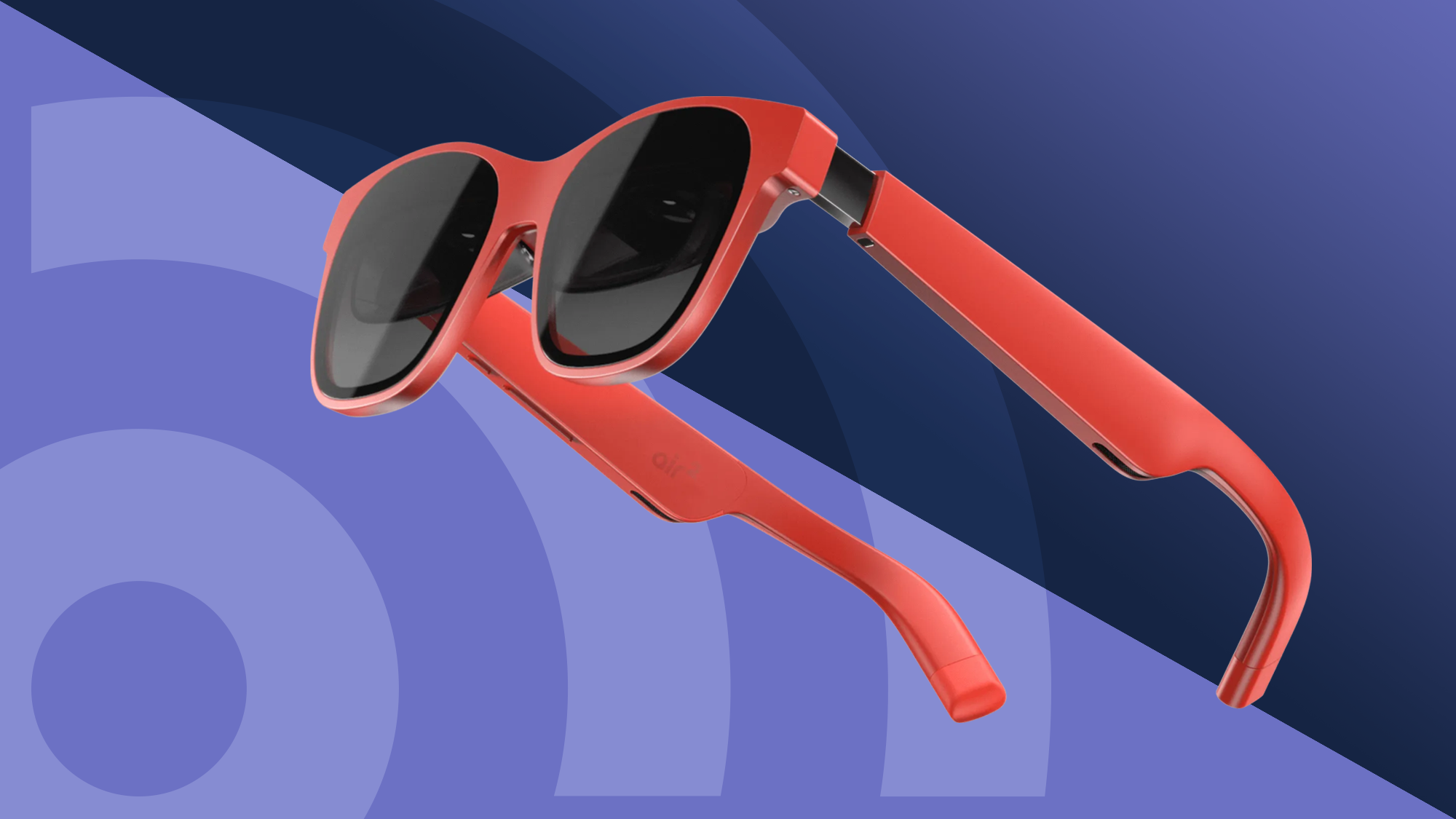
1. Quick List
2. Best AR smart glasses
3. Best cheap AR smart glasses
4. Best midrange AR smart glasses
5. Best AI smart glasses
6. Best smart glasses for ChatGPT
7. Best smart home glasses
We've seen quite the shakeup here in the world of the best smart glasses. Not because of the launch of the Meta Orion AR glasses or Samsung and Google's Android XR glasses (they're both stioll some time from launch based on leaks) but because of some impressive specs you can buy today.
That's because the Xreal One and RayNeo Air 3s glasses have entered the numebr one and two slots on this list as the best AR smart glasses and best cheap AR smart glasses respectively.
They're superb glasses but the ones to really watch are the RayNeos as they're super affordable yet incredibly capable specs. If you've been waiting to buy a pair of AR smart glasses to make your commute more manageable these might the pair you've been waiting for.
Quick list
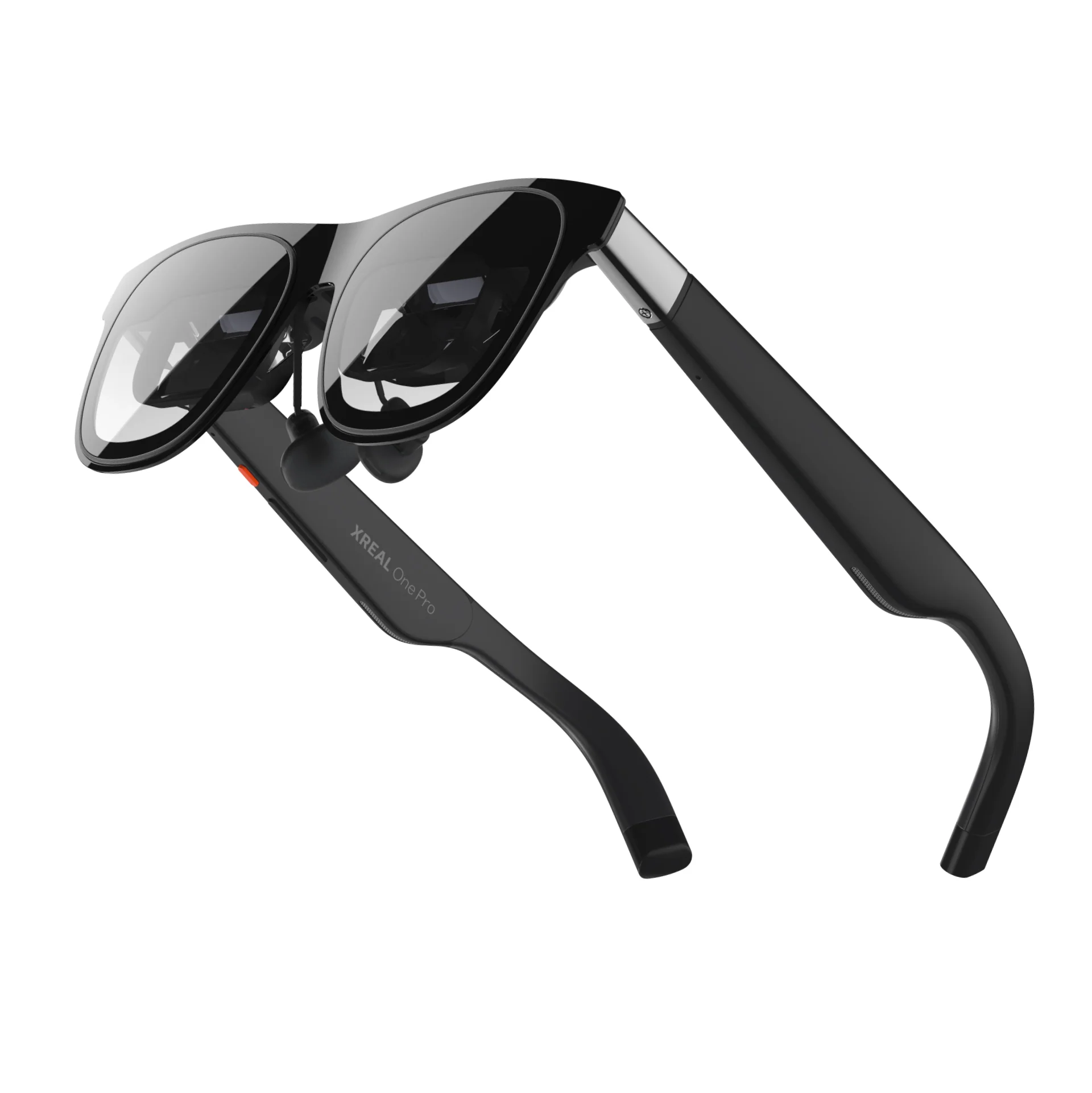
With impressive visuals, solid audio, and a new optical design that’s sleeker and more effective than anything I ‘ve tested before Xreal’s glasses give us the future of smart glasses today.

If the Xreal specs are too pricey for your budget then these cheaper options from RayNeo could be just what you need thanks to their still solid visual and audio performance.
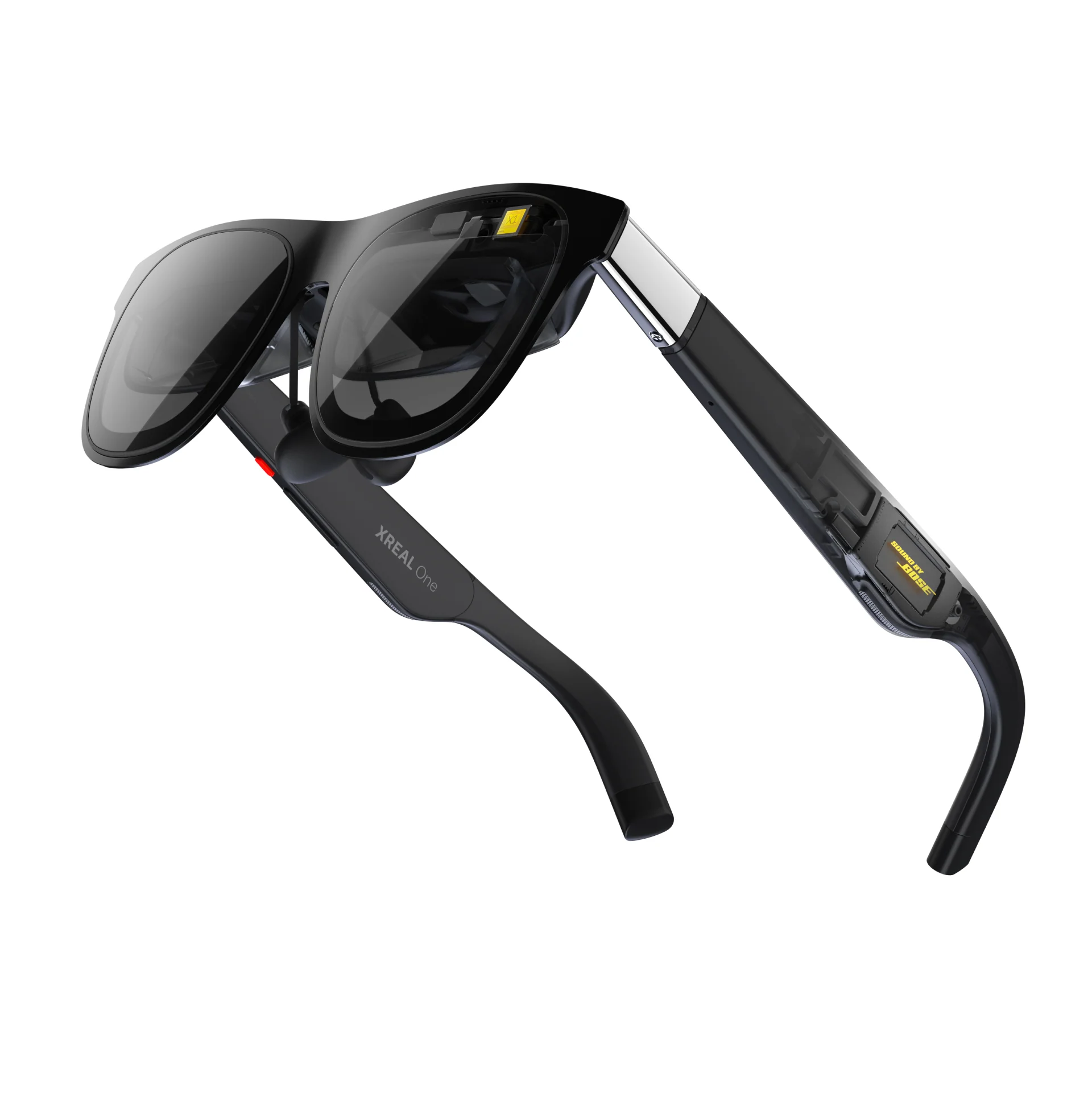
For their price these smart glasses offer some of the best audio I’ve heard from a pair of smart specs, excellent visuals, and a comfortable design that you can wear for hours at a time.
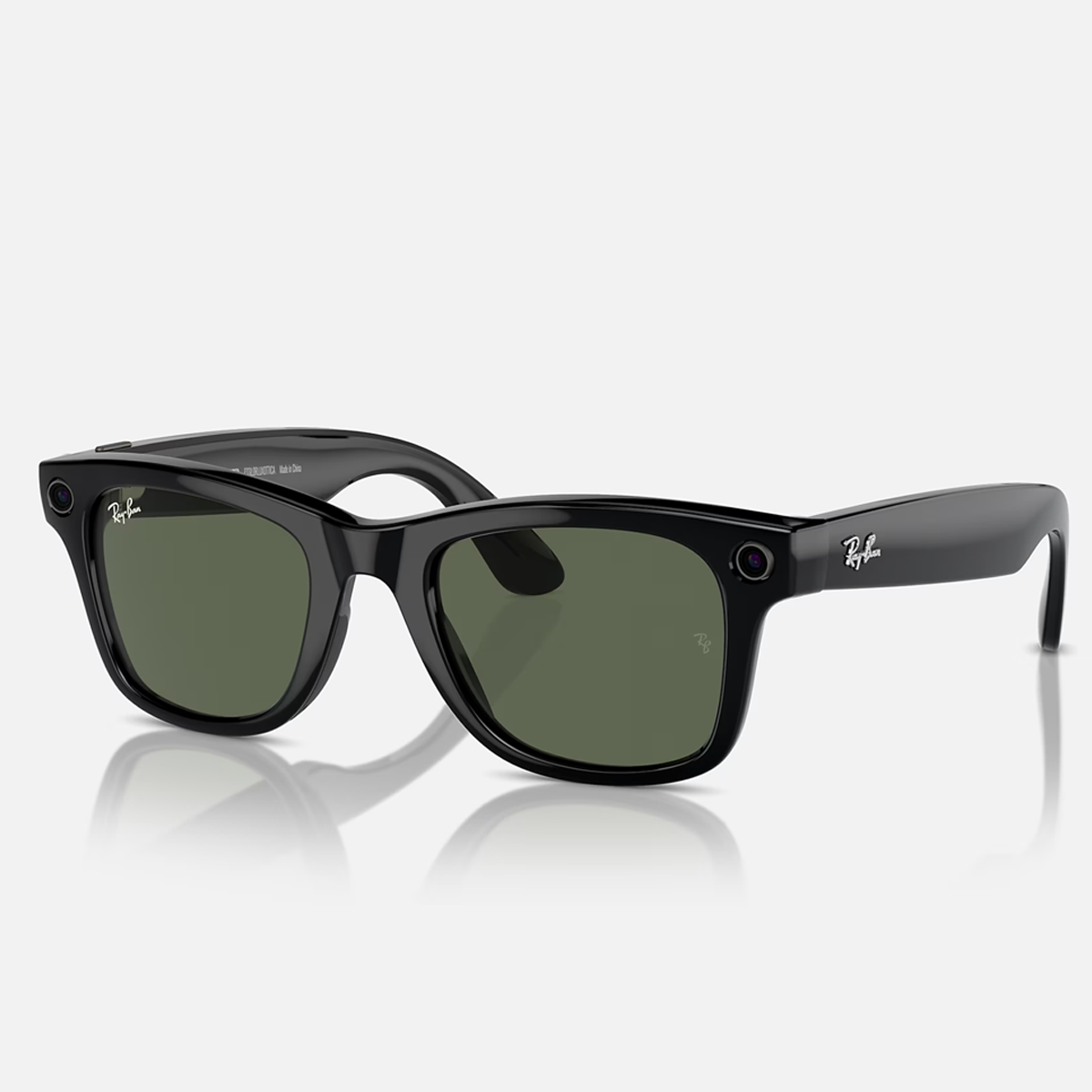
After a wearable AI instead of AR specs? Well, the Meta AI in these stylish Ray-Bans is pretty darn helpful, especially thanks to their camera-enhanced 'Look and Ask feature.'
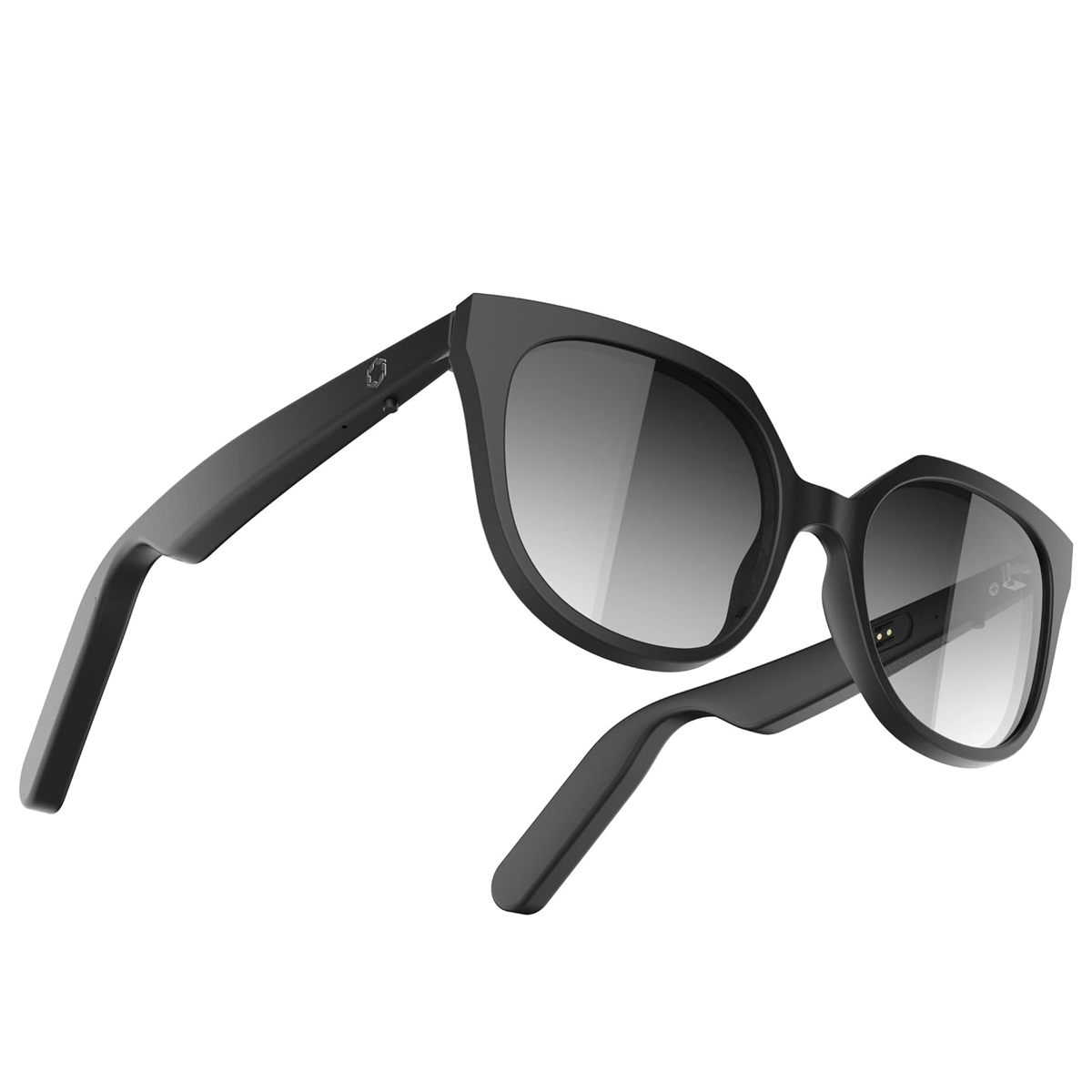
While their overall AI capabilities are not as impressive as the Ray-Ban Meta glasses', if you're married to ChatGPT these are the best glasses we've tried that offer hands-free access to it.
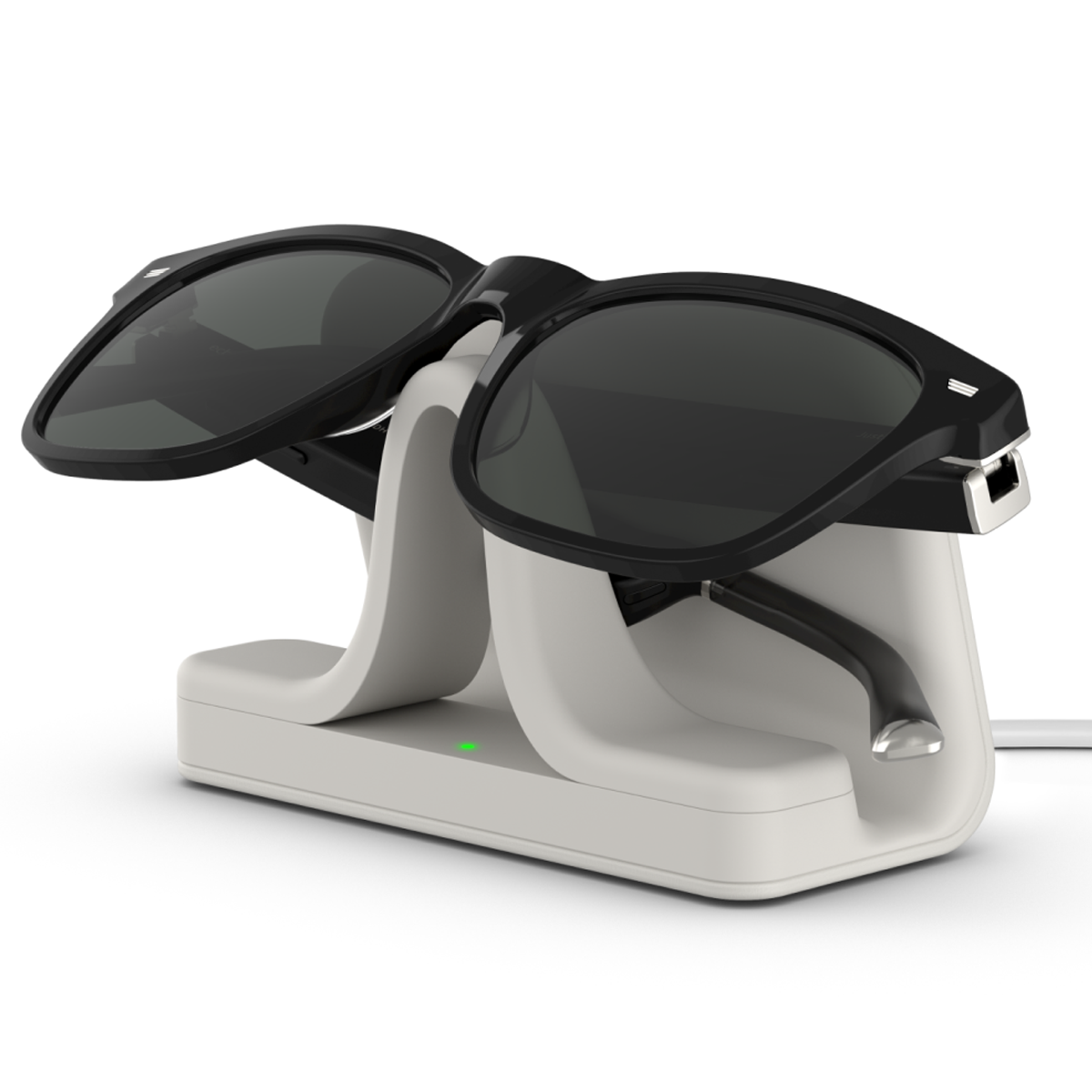
Much like the Lucyd glasses these specs aren't as impressive as Meta and Ray-Ban's smart glasses collab, but if you have plenty of Alexa-compatible smart home tech then there is some extra functionality to be found with the Echo Frames.
The best AR smart glasses in 2024
Why you can trust TechRadar
Below, you'll find full write-ups for the best smart glasses we've tested, along with links to our reviews for each of them.
The best AR smart glasses
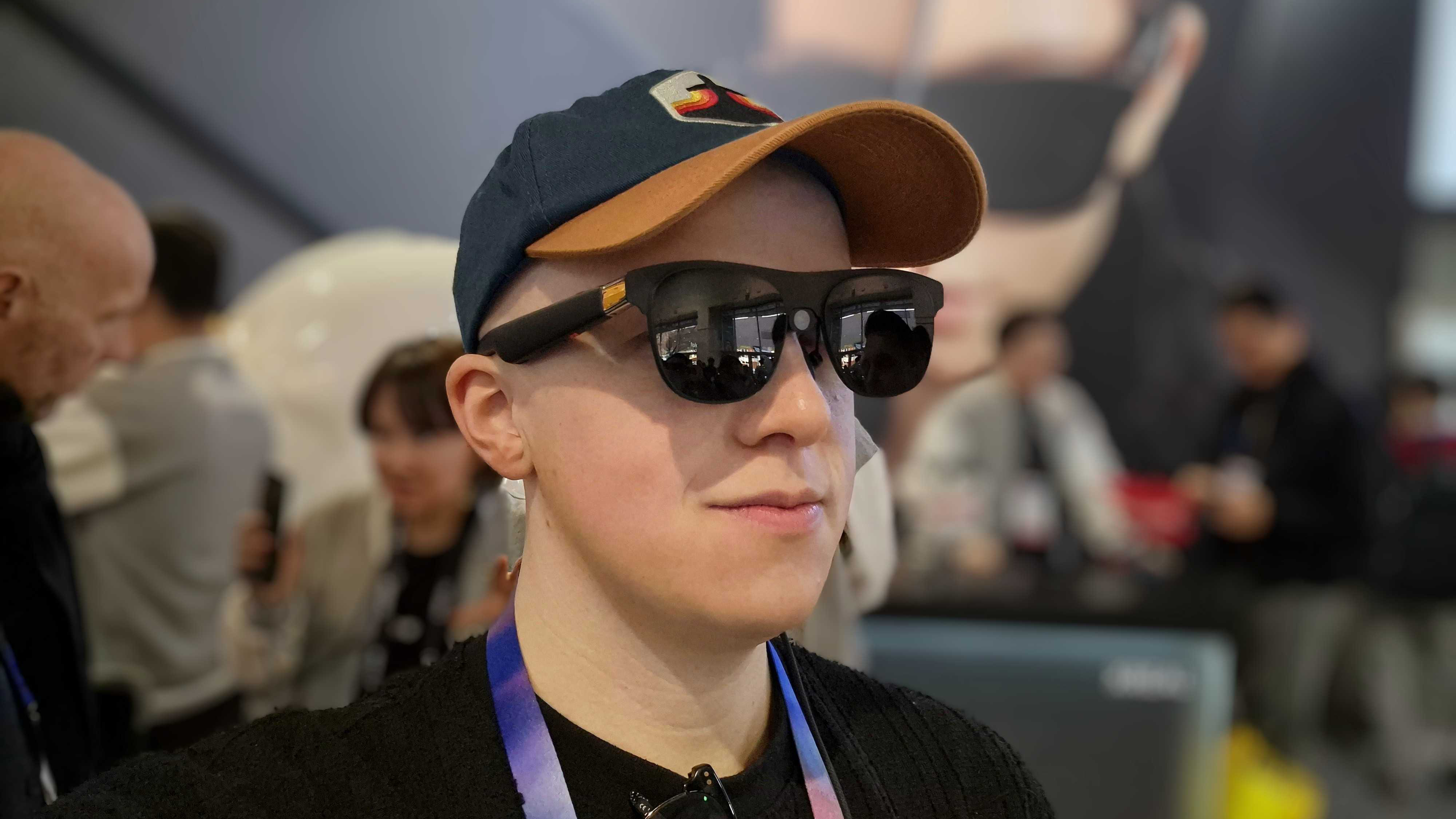
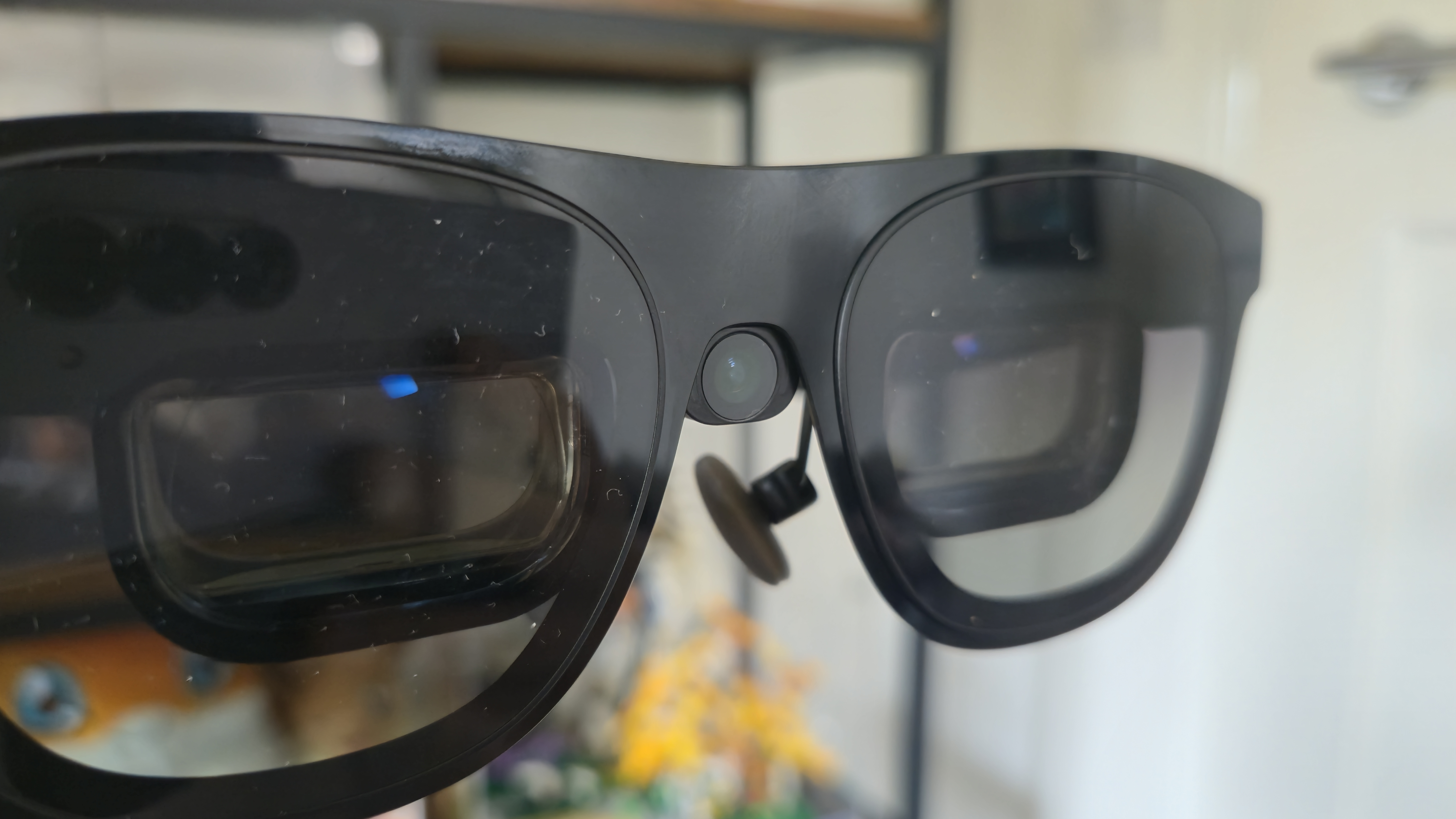
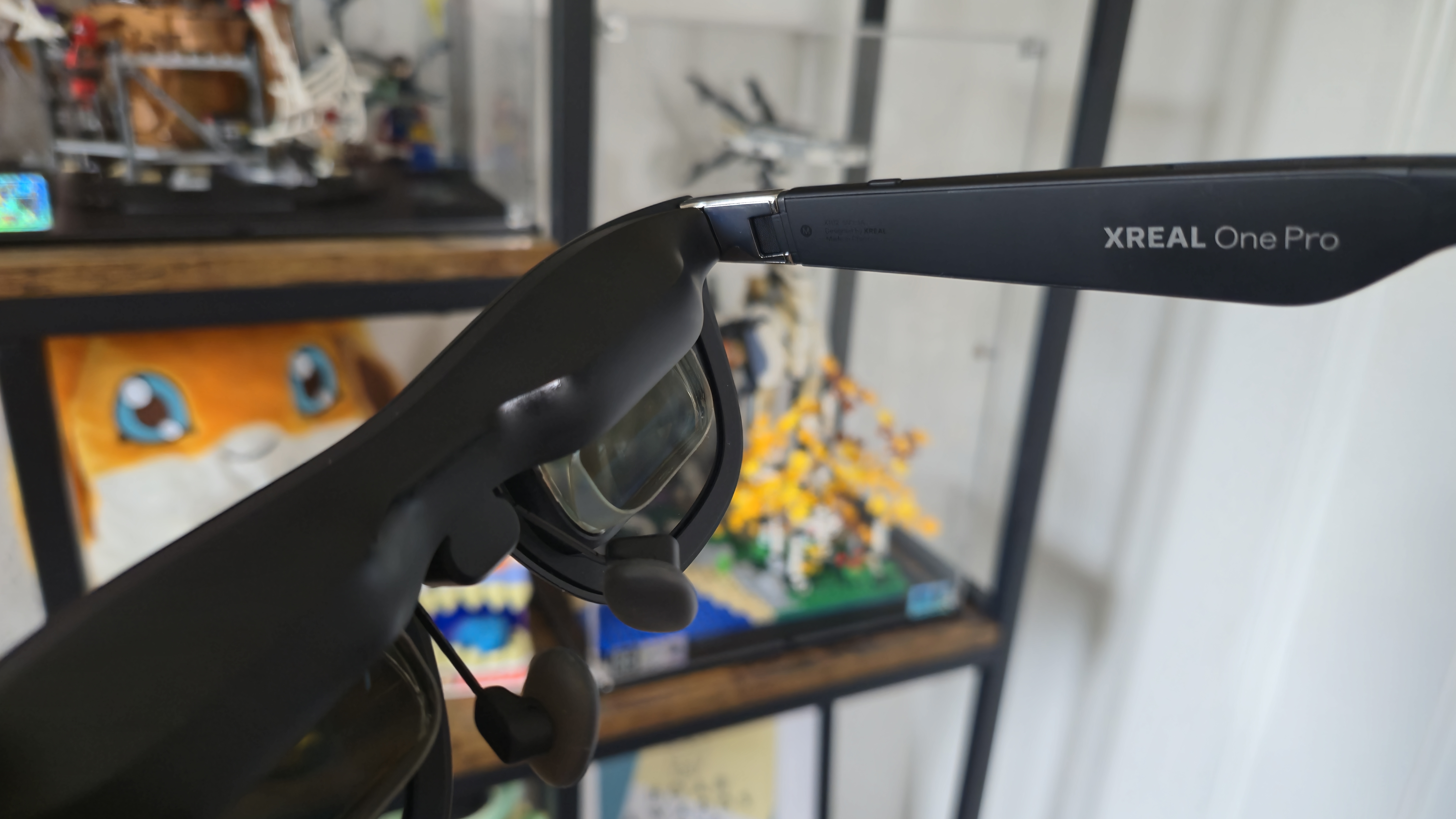
Specifications
Reasons to buy
Reasons to avoid
When I had finished testing the Xreal One glasses I declared them the best smart glasses you could buy, and prceeded to take them everywhere as my AR glasses of choice for wathcing shows and working on a giant virtual screen when I travel. As you’d hope from an upgraded model, the Xreal One Pro glasses utterly bested them.
With a larger 57-degree field of view these boast one of the biggest pictures I've seen from AR smart glasses, and image which is further enhanced by its use of new Sony micro-OLED displays alongside a higher 700-nit perceived brightness. WIth a brighter picture colors are more vibrant, and contrast more noticable.
Just like its counterpart elsewhere on this list ou can also look forward to the same solid audio tuned by Bose engineers, 120Hz 1080p visuals, an electrochromically dimmable lens backdrop, and a sleek design which helps make the Xreal Ones and now also the Xreal One Pros excellent.
The real succes here however is the new birdbath enhanced optical engine. This new method of light reflection is not only sleeker but more effective – both in terms of the visuals looking crisper with significantly less blurriness at the fringes, but also offering an easier to see through design which feels like it'll be crucial to the future of AR glasses.
The best cheap AR smart glasses
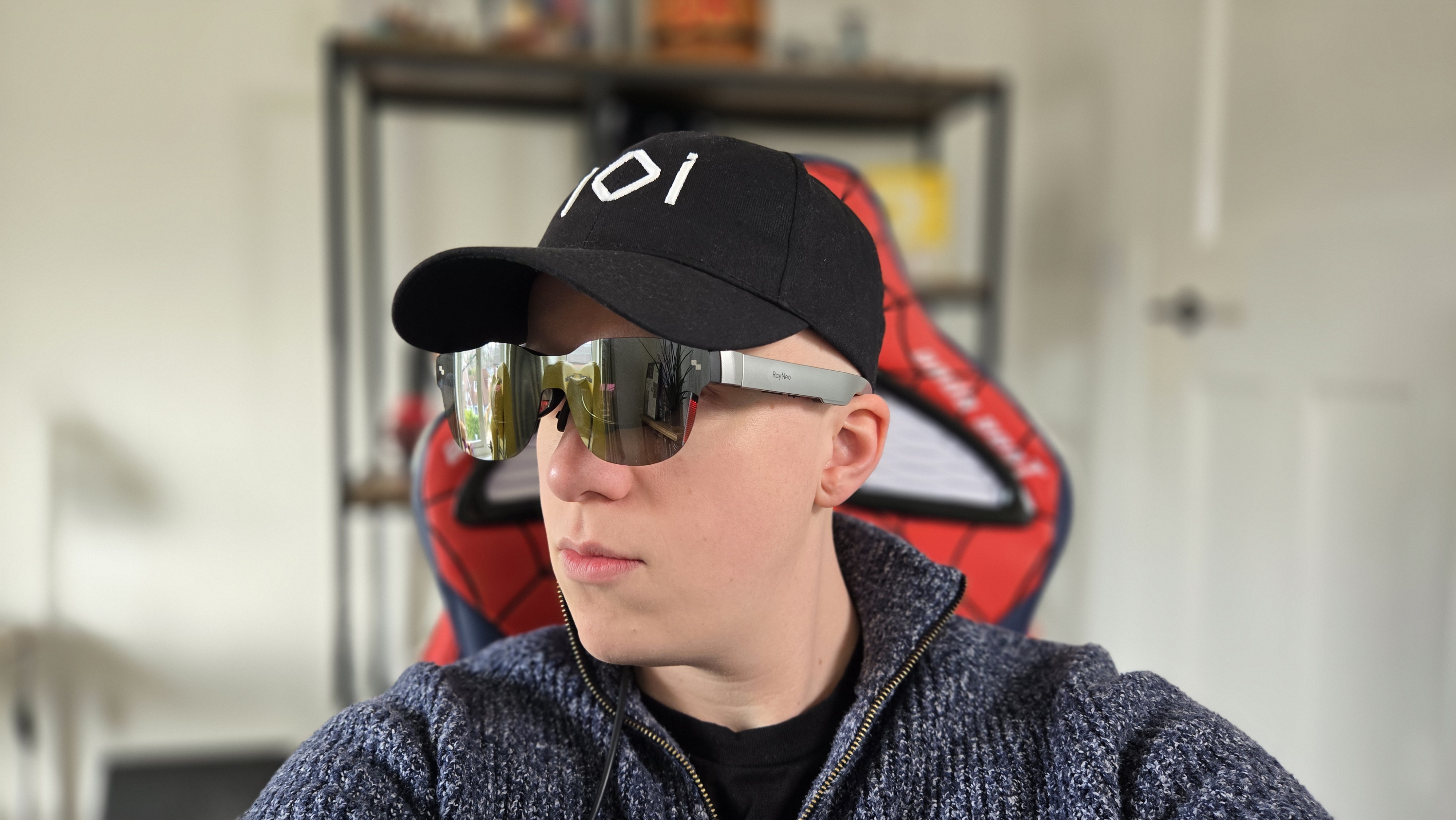
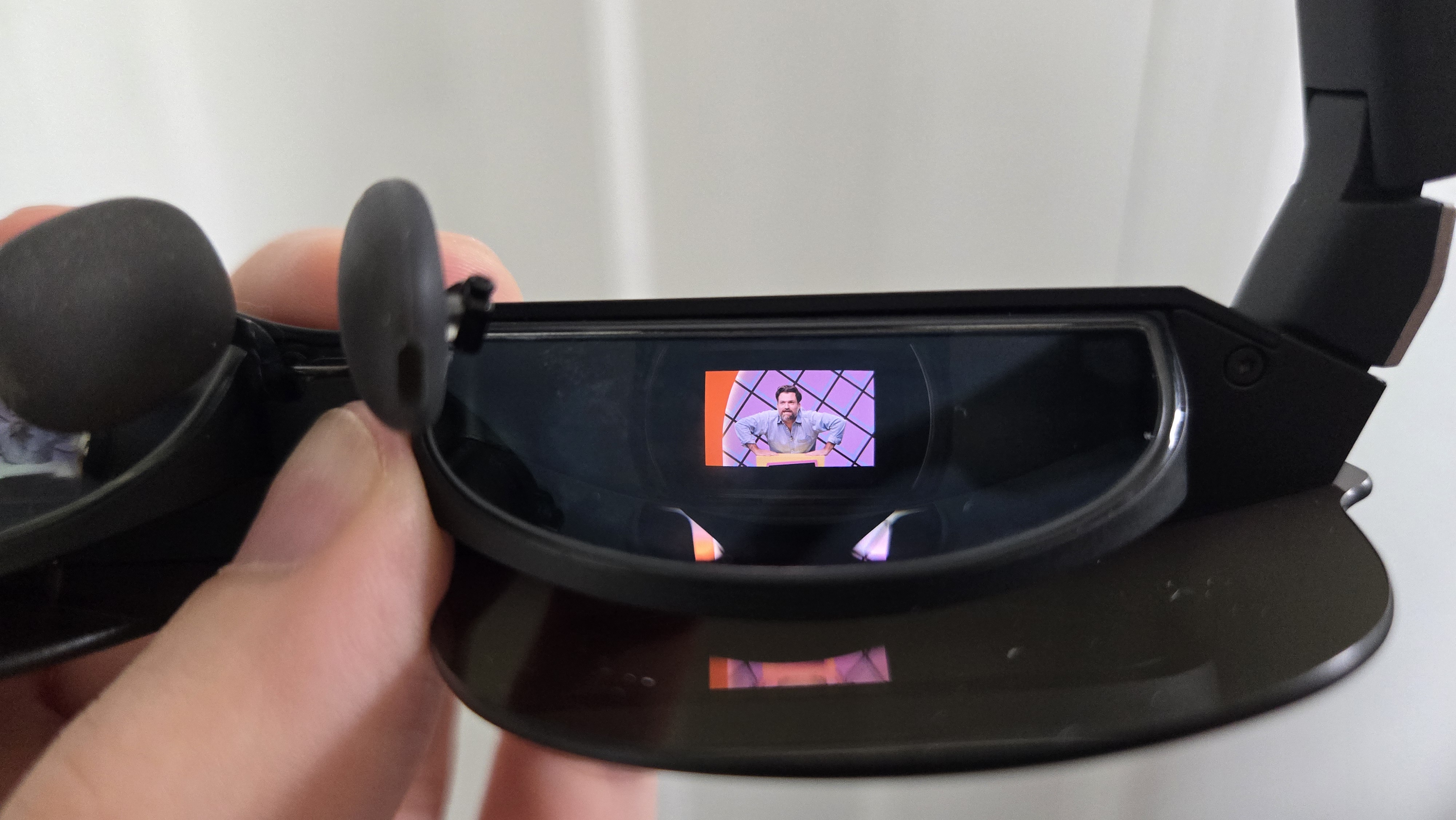
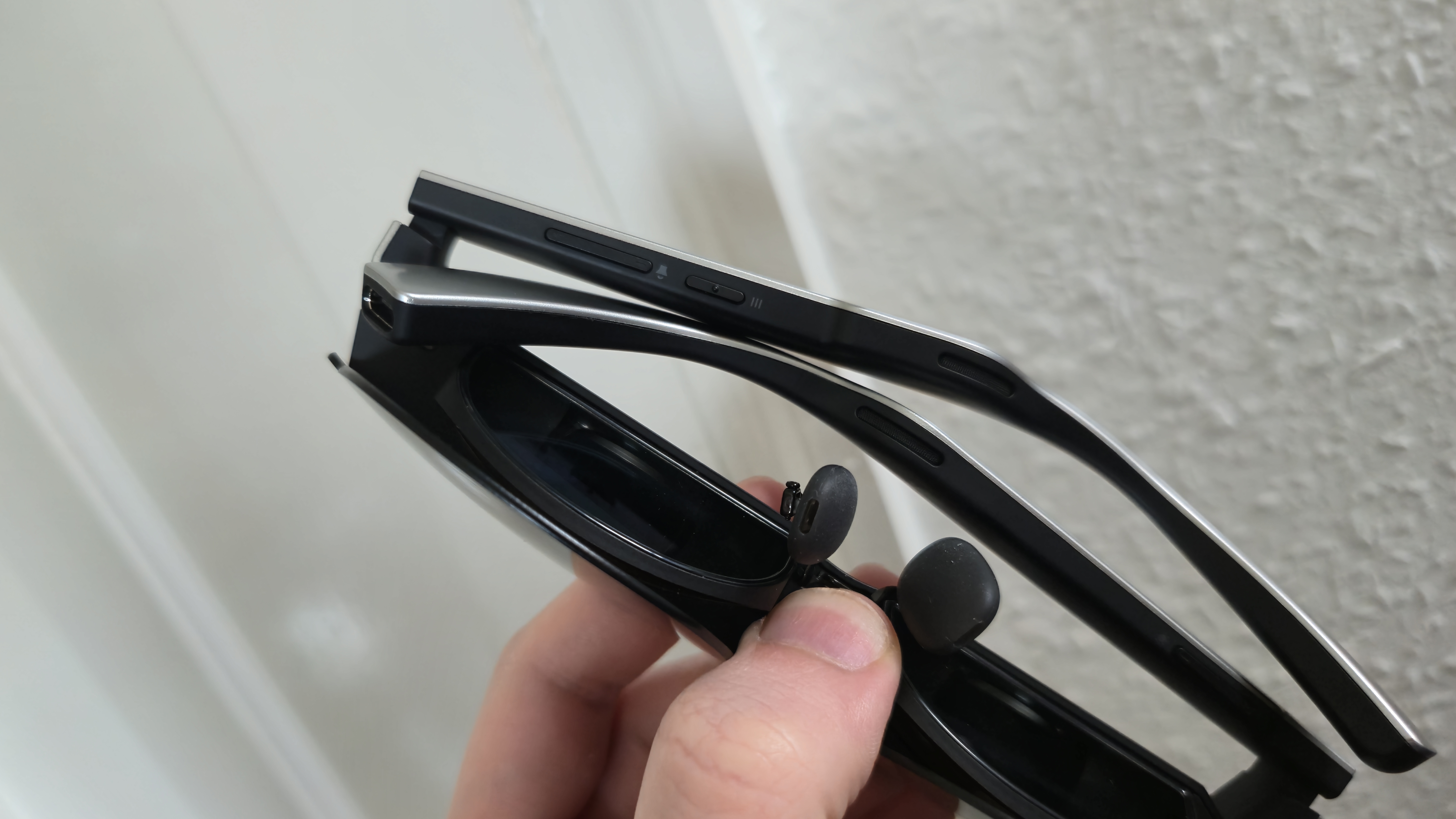
Specifications
Reasons to buy
Reasons to avoid
These are by far and away the best value for money AR smart glasses I’ve tested.
Coming in at just $269 (they're only available in the US at the moment) these wearable displays punch well above their pay grade in every important regard.
Their dual-micro-OLED setup boasts solid color-accuracy and contrast to make your favorite shows and films pop, and as for the audio you can hear the improvements compared to their predecessors when it comes to producing midtones, highs, and bass.
The design is excellent too – finding a good balance between style and comfort.
That’s not to say they’re perfect, mind. There are times when the image can appear washed out because the mirrored outer lens acting as a backdrop for the display doesn’t block out all external light, and you’ll still want to consider using these glasses in conjunction with a pair of headphones.
But at such a low cost these AR glasses can be forgiven for having a few deficiencies, and overall they feel like they’re something special – the first AR smart glasses I could recommend to most people.
You’ll certainly get more if you spend more on alternatives like the Xreal One glasses above, but if you’re not looking to break the bank, there’s never been a better time to finally experience what these kinds of AR specs can do.
The best midrange AR smart glasses
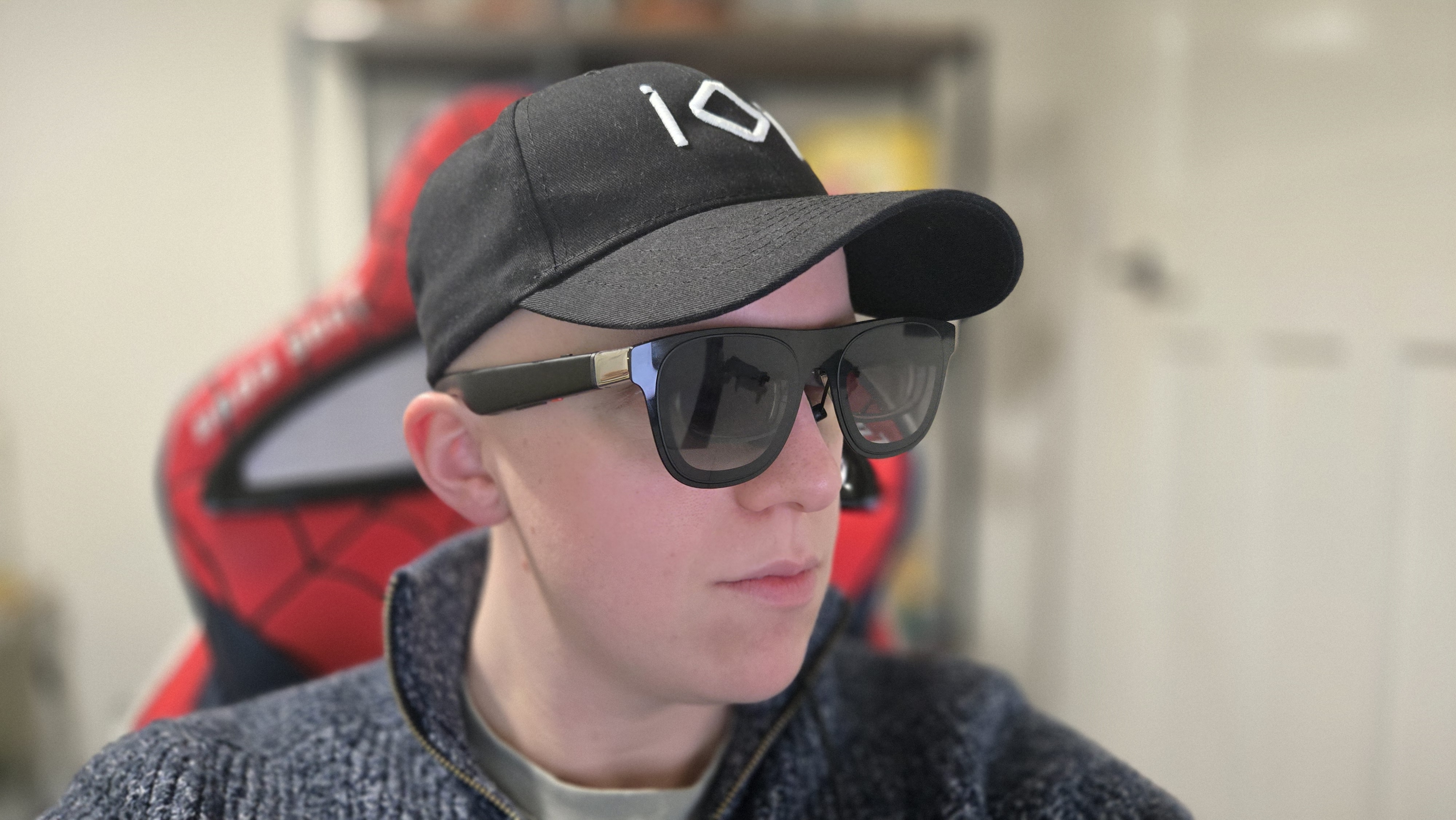
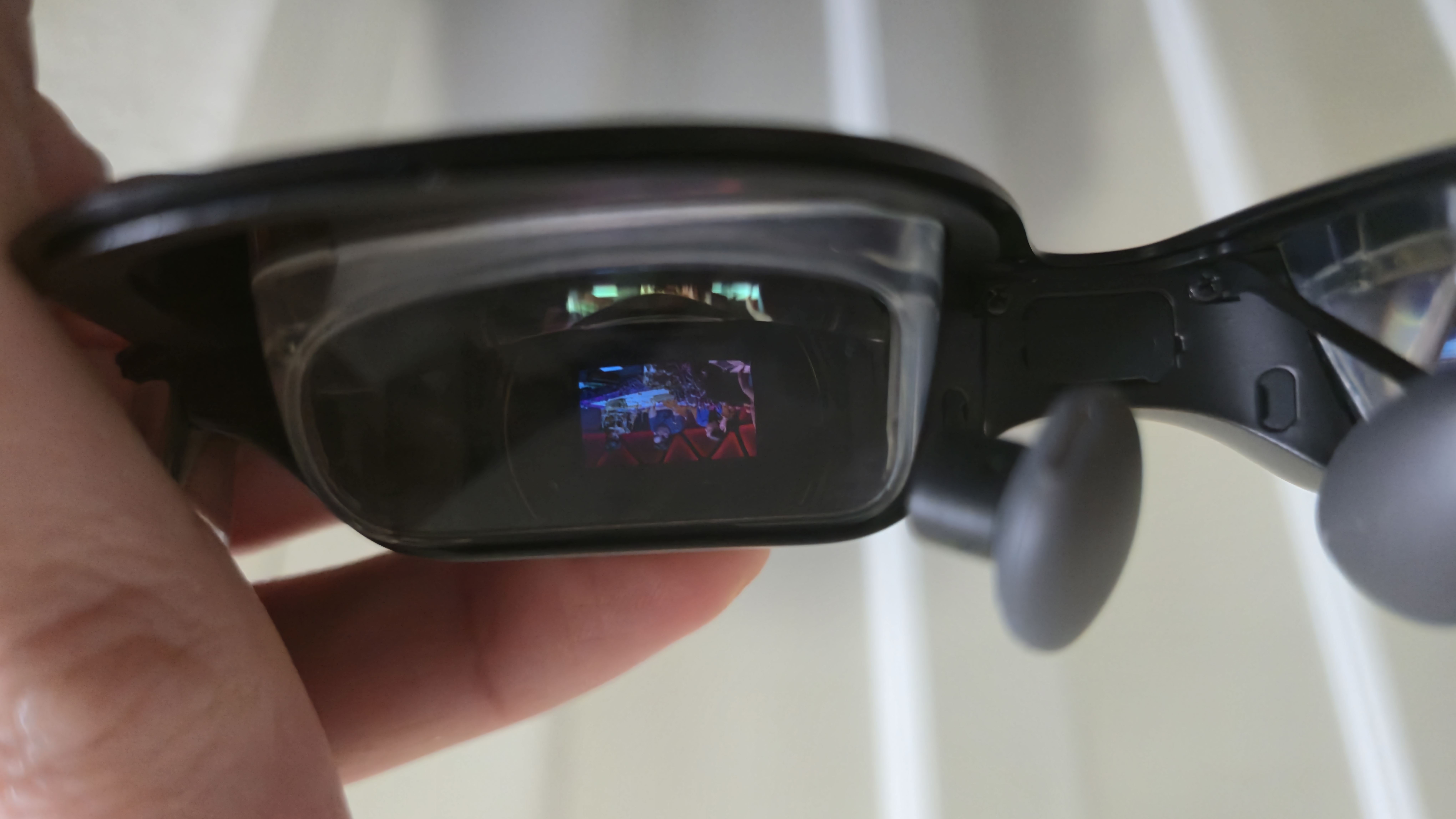
Specifications
Reasons to buy
Reasons to avoid
I’ve tested my fair share of AR smart glasses, and I was blown away when I tested the Xreal One glasses.
They boast a visually impressive full-HD 120Hz OLED with a 600-nit peak brightness. This leads to an image with vivid colors and excellent contrast, which is further aided by the lens’ electrochromic dimming providing a deep black backdrop.
Unlike most other smartspecs this model also delivers good sound thanks to audio courtesy of Bose. Headphones will still deliver better audio, but these smart glasses don’t feel incomplete without a pair of cans – something I can’t say of their rivals.
Just note that if you’re picking up the Xreal One you’ll probably also want to grab Xreal’s Beam Pro – a smartphone-like companion device that transforms your Xreal glasses setup into a complete spatial computing package (from an entertainment perspective).
It’s not technically a requirement to use the Xreal One glasses – they’re compatible with a host of other USB-C devices – but even the cheapest Beam Pro which starts at $199 / £189 for a model with 128GB of storage and 6GB of RAM feels like an essential add-on for these glasses if you want to maximise their performance.
You can also very easily hook the specs up to many USB-C smartphones, to your laptop, and to a game console if you have the right adapter (such as an HDMI to USB-C cable).
At $499 / £449 the Xreal One aren’t the cheapest, but they more than justify their cost by offering premium performance, making them an easy pick for the best midrange option on this list; landing comfortably between their Pro model in the number one slot, and the affordable RayNeo Air 3S as our best budget pick.
The best AI smart glasses

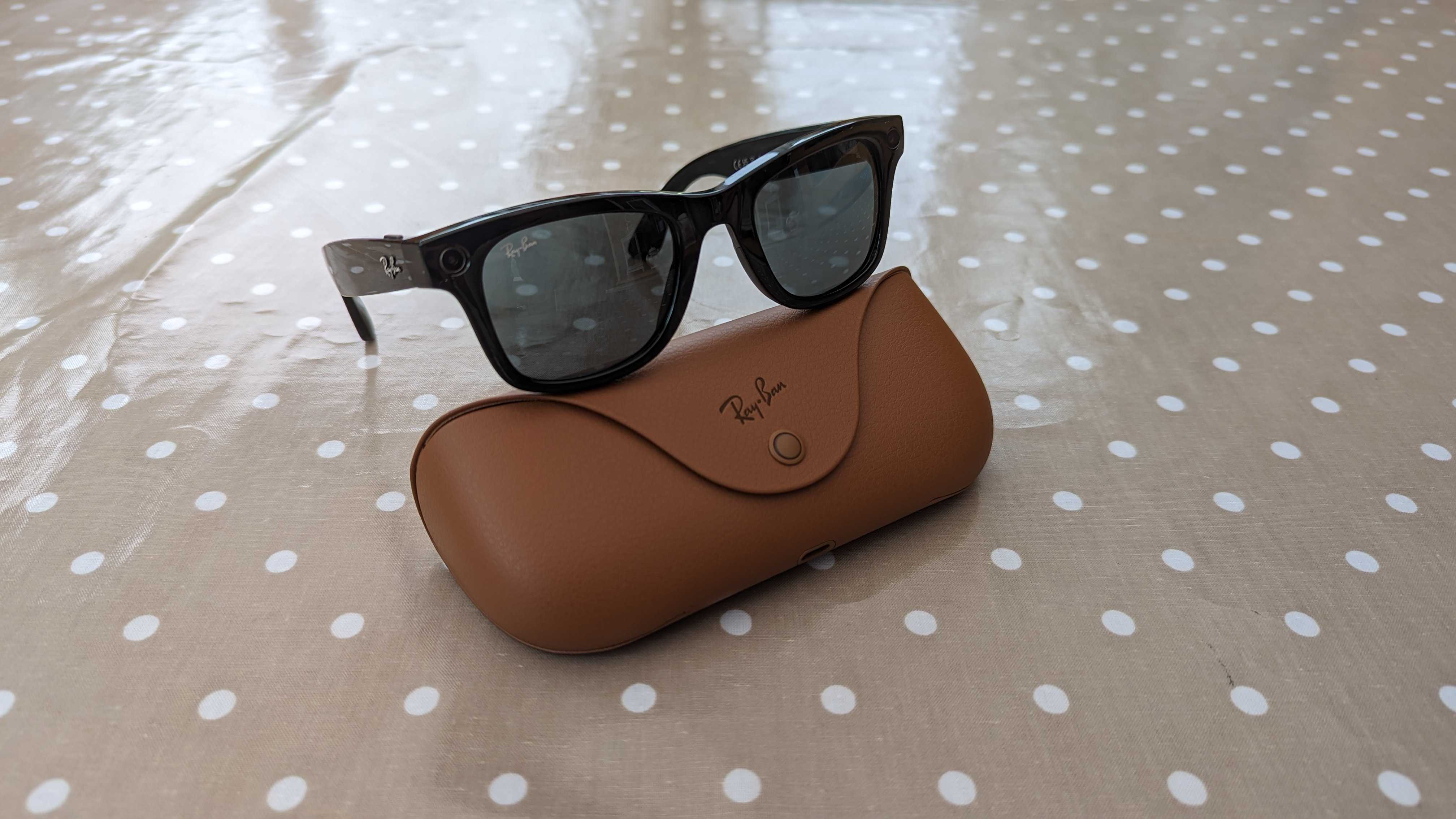
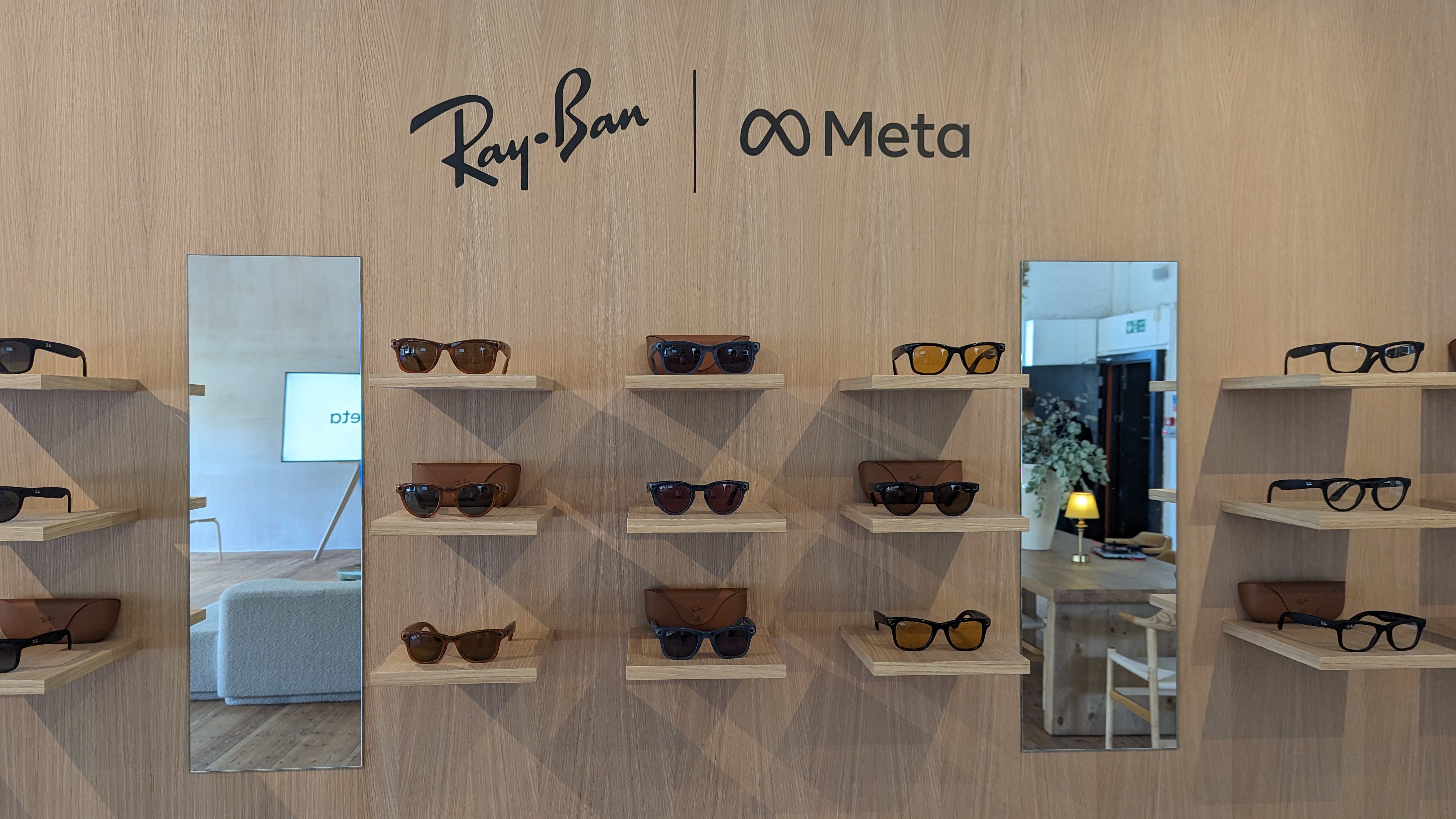
Specifications
Reasons to buy
Reasons to avoid
Smart glasses come in different forms, and rather than incorporating AR elements, these specs from Ray-Ban and Meta instead use AI – artificial intelligence – to earn their smart rating.
We’ve been very impressed by the Meta AI, specifically its Look and Ask feature. Other AI-powered smart glasses simply let you talk to an AI like ChatGPT; you pose your question which is then relayed to a bot via your phone’s internet connection (with the glasses being paired to your phone via Bluetooth).
The Ray-Ban Meta smart glasses do the same thing with a bonus feature. If you begin your prompt with “Hey Meta, look and…” they’ll snap a pic of what you’re seeing and use that image to inform any responses. It can struggle to find an answer and still make errors, but the hands-free nature and the ability to use images as context are exceptionally useful – with the Meta AI being better at mimicking a more human-like level of comprehension than we’ve seen in rival smart glasses.
There are some issues to note with the specs, however. Chiefly the audio capabilities aren’t anything to write home about if you’re trying to use these smart glasses for music, and the camera as an actual camera for snapping pics isn’t good enough to justify using it over the smartphone in your pocket. The only advantage it does offer is it’s a convenient way to record first-person videos, or live stream to Meta platforms.
Despite these flaws, the Ray-Ban Meta smart glasses are by far the best AI wearable we’ve tested, and even on the AI’s off-days (or when they’re out of charge) the glasses will always be an exceptionally stylish pair of sunglasses that’ll protect your eyes in the sun.
The best smart glasses for ChatGPT
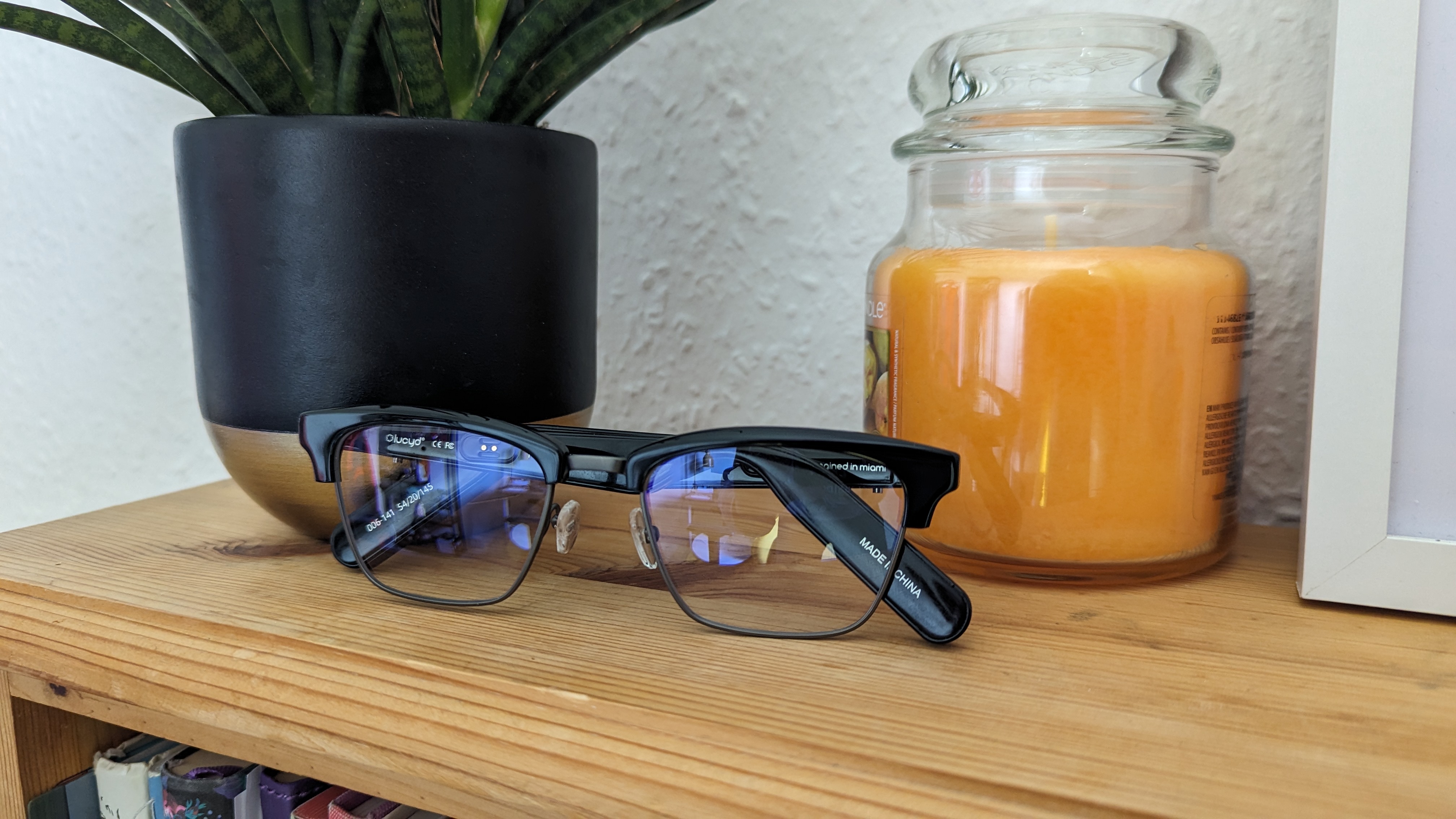
5. Lucyd glasses
Specifications
Reasons to buy
Reasons to avoid
If you want AI glasses that specifically rely on OpenAI’s ChatGPT then instead of the Meta specs listed above you’ll probably prefer the Lucyd Lyte smart glasses.
By downloading the Lucyd app, and connecting your phone to these smart glasses via Bluetooth, you can talk with ChatGPT and ask it questions with your voice that it’ll respond to (provided you also have an internet connection). If you have an iPhone you’ll be able to talk to ChatGPT completely hands-free using Siri – without waiting for Apple Intelligence to launch – while on Android you currently need to activate ChatGPT manually each time before you talk.
Just note that unlike the Ray-Ban smart glasses above these lack a camera – so you won't be able to rely on GPT-4o’s newly released equivalent to look and ask. What’s more, unlike other AI models – like the Meta AI on the Ray-Bans – we found that these specs are only accurate to September 2023 because it doesn’t have internet access and this was the last time ChatGPT’s data was updated.
Design-wise, one factor we loved was the range of frame and lens styles afforded to us by the Lucyd Lyte smart glasses. Glasses aren’t just functional, they’re a fashion accessory, an extension of your personality, and having a wider range of freedom to choose our preferred look was a boon.
Though on the design point, we did find that wearing these glasses for a full day was uncomfortable – an issue we didn’t have with the Ray-Ban Meta collaboration spectacles – so it wasn’t a complete win. They also struggled in the audio department, so unless you’re a ChatGPT superfan Meta’s AI wearable above will almost certainly serve you better.
The best smart home glasses


Specifications
Reasons to buy
Reasons to avoid
Rounding off our AI-equipped smart specs are the Amazon Echo Frames, which as you’d expect offer hands-free access to the Alexa assistant.
This feature is useful if your home is packed with Alexa-compatible smart home tech as not only can you control it with your smart speakers, you can manage it using your smart glasses, which is kinda neat. You can also use Alexa for other useful features like jumping into music or podcasts on your connected phone and finding answers to questions (though it’s not as in-depth as a generative AI).
Unfortunately, beyond the Alexa integration, there’s not a lot to write home about when it comes to these smart glasses.
Their audio focus is let down by a generally poor bass response, sound leakage, and overall not standing up to earbuds. Plus without cameras, they lack the content creation angle that people have enjoyed from rivals like the smart Ray-Bans above. Design-wise they are stylish and comfortable, though they lack a charging case – and we weren’t fans of their charging dock.
So much like the Lucyd specs, unless you’re heavily tied into the Alexa ecosystem we’d recommend the Ray-Ban Meta smart glasses if you’re after artificial intelligence-powered glasses.
Sign up for breaking news, reviews, opinion, top tech deals, and more.

Hamish is a Senior Staff Writer for TechRadar and you’ll see his name appearing on articles across nearly every topic on the site from smart home deals to speaker reviews to graphics card news and everything in between. He uses his broad range of knowledge to help explain the latest gadgets and if they’re a must-buy or a fad fueled by hype. Though his specialty is writing about everything going on in the world of virtual reality and augmented reality.